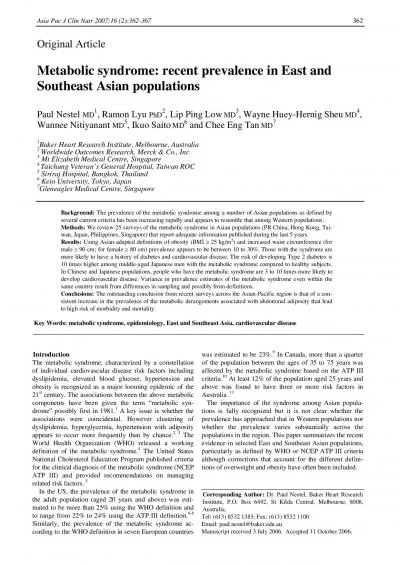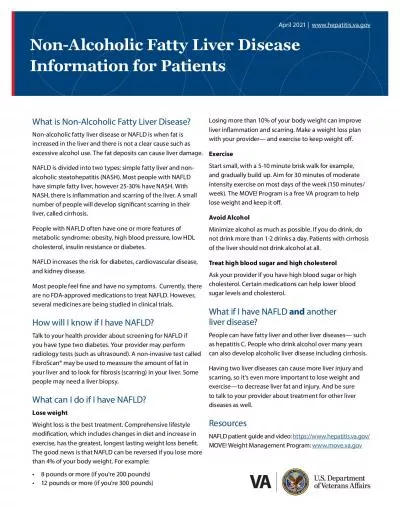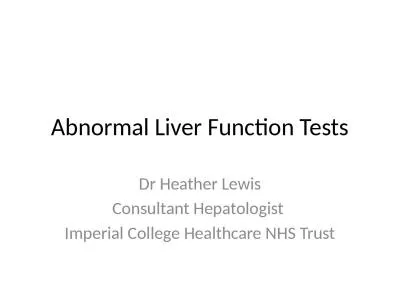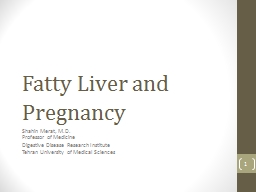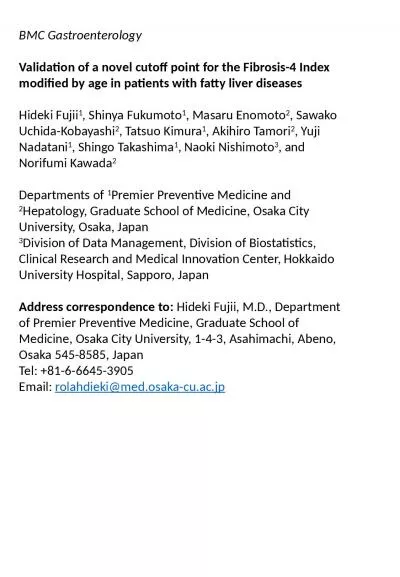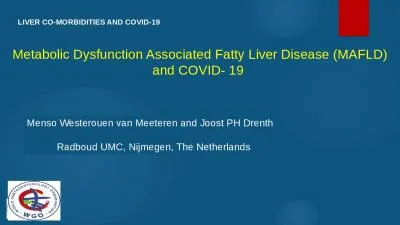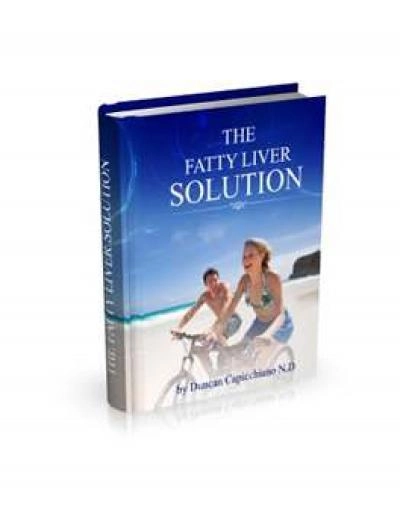PDF-Metabolic syndrome Nonalcoholic fatty liver disease Nonalcoholic
Author : ximena | Published Date : 2022-10-13
269 flammation Cardiovascular disease EndotheliumIntroductionNAFLD with obesity type 2 diabetes andNAFLD is still not clear even if the insulin In particular a decreased
Presentation Embed Code
Download Presentation
Download Presentation The PPT/PDF document "Metabolic syndrome Nonalcoholic fatty li..." is the property of its rightful owner. Permission is granted to download and print the materials on this website for personal, non-commercial use only, and to display it on your personal computer provided you do not modify the materials and that you retain all copyright notices contained in the materials. By downloading content from our website, you accept the terms of this agreement.
Metabolic syndrome Nonalcoholic fatty liver disease Nonalcoholic: Transcript
Download Rules Of Document
"Metabolic syndrome Nonalcoholic fatty liver disease Nonalcoholic"The content belongs to its owner. You may download and print it for personal use, without modification, and keep all copyright notices. By downloading, you agree to these terms.
Related Documents

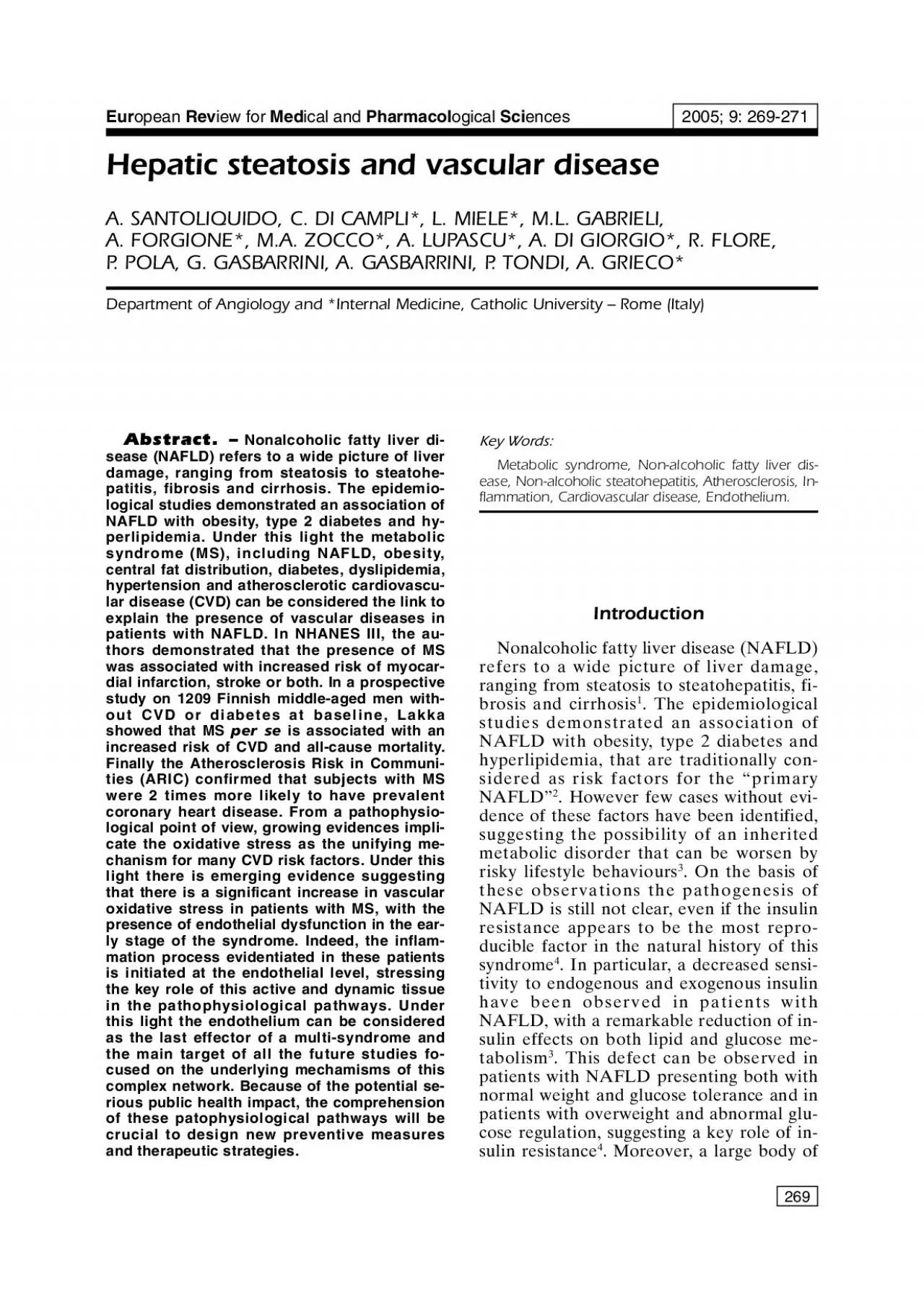
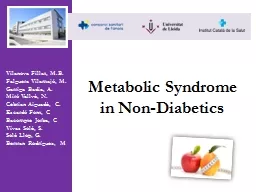
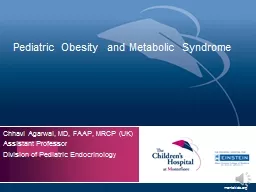
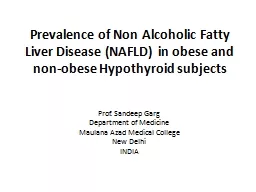
![Nonalcoholic Fatty Liver Disease [NAFLD]](https://thumbs.docslides.com/658991/nonalcoholic-fatty-liver-disease-nafld.jpg)

